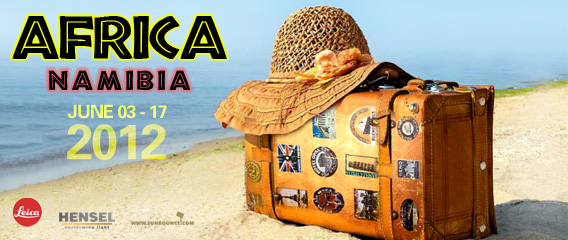Going to Africa – Pt. 3 Getting from Here to There
Getting from Here to There
Our journey started Sunday evening from Miami International Airport. I like arriving early to avoid any surprises. Good thing, too. It gave me time to go around the shops to find an electrical outlet converter because I remembered at the last minute that the outlets there are different to those in the U.S. – my lights and other equipment would have been useless. I finally found them and needless to say, airport prices are just a little more expensive than at your handy Radio Shack. However, because Radio Shack didn’t have them in stock, airport prices would have to do.
I learned a few lessons the hard way in my previous trips to Africa. Everything is ten times more valuable if you need it in Africa, mostly because the locals know you don’t have much of a choice and you’ll have to pay whatever they’re asking (unless we’re trading antelopes or zebras… not all of Africa’s money hungry, you know).
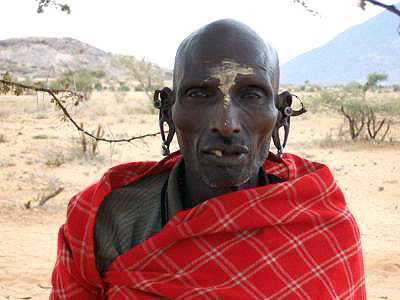 With the continent of Africa being so expansive, there are a lot of different people and ethnicities to be found. While I’m here, I am also planning to visit some Namibian tribesmen who couldn’t care less about the modern-world’s techno doodads and gizmos. In their eyes, our world is made up of nonsense and trivialities compared to their way of life that include ancient rituals and following the path of their ancestors. All it’ll cost you to meet them is the price of a guide who speaks their language, easily found in small, local cities.
With the continent of Africa being so expansive, there are a lot of different people and ethnicities to be found. While I’m here, I am also planning to visit some Namibian tribesmen who couldn’t care less about the modern-world’s techno doodads and gizmos. In their eyes, our world is made up of nonsense and trivialities compared to their way of life that include ancient rituals and following the path of their ancestors. All it’ll cost you to meet them is the price of a guide who speaks their language, easily found in small, local cities.
So, what do you take to please the tribal village leaders? You buy baking powder, fabric and other items for trading purposes in exchange for interaction with the people of the village. The barter system is widely practiced in tribal communities across the Africa. However, don’t mistake the tribe leader for a fool – he knows exactly what he will let you do, what you can take pictures of and how much of that works out into baking powder. If you do get a chance to visit tribal communities, don’t give away all of your baking powder and flour in one go – offer just a little because they know how to squeeze you for some more and they can spot an easy mark coming from a mile away. Some things never change, regardless of where you are in the world.
What’s in the bag?
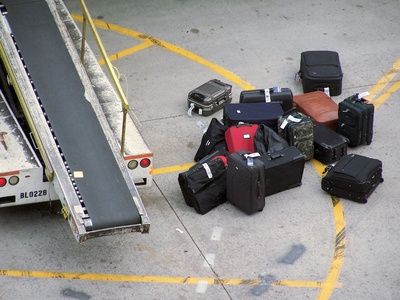 If you’re curious about what we’ve decided to bring with us, here’s a short description of the equipment and other things we’ve brought along on our African photo safari. While I’m usually cool and collected on set at home, I’m absolutely terrified when I think about what I might’ve forgotten when I travel! My mind runs away with me and I can imagine that while I’m in my airplane seat halfway across the ocean, an important item is still sitting at home on my table right where I left it! This is why it’s very important to not leave the packing to the last minute because you begin to have doubts and second thoughts – sometimes you wind up forgetting something just the same, but at least it’s not due to poor planning and preparation. You’ll also have to call the models who are traveling with you and remind them to bring their passports. I’ve had a few experiences in the past where models have arrived at the airport ready to go but left their passport at home (as if it’ll do any good there!).
If you’re curious about what we’ve decided to bring with us, here’s a short description of the equipment and other things we’ve brought along on our African photo safari. While I’m usually cool and collected on set at home, I’m absolutely terrified when I think about what I might’ve forgotten when I travel! My mind runs away with me and I can imagine that while I’m in my airplane seat halfway across the ocean, an important item is still sitting at home on my table right where I left it! This is why it’s very important to not leave the packing to the last minute because you begin to have doubts and second thoughts – sometimes you wind up forgetting something just the same, but at least it’s not due to poor planning and preparation. You’ll also have to call the models who are traveling with you and remind them to bring their passports. I’ve had a few experiences in the past where models have arrived at the airport ready to go but left their passport at home (as if it’ll do any good there!).
When traveling to far destinations on multiple airlines, the equipment becomes an issue. You can’t take everything with you because you have to take into consideration things like weight restrictions that can vary from airline to airline. It’s imperative you check foreign airline websites for their weight restrictions because overweight penalties can and do apply. While some airlines will charge you just a flat fee for your bags being overweight, there are others who will charge you for each pound or kilo over the limit – and they mean business, too!
 When packing your gear, it’s a good idea to have a small scale for lightweight items. (A small bathroom scale will do in a pinch.) This way you’ll know how much each item weighs so if you’re trying to figure out which items to leave out, you’ll know how close you are to the requirements. (Be sure to write down how much each weighs on your prep list, but more on that later.)
When packing your gear, it’s a good idea to have a small scale for lightweight items. (A small bathroom scale will do in a pinch.) This way you’ll know how much each item weighs so if you’re trying to figure out which items to leave out, you’ll know how close you are to the requirements. (Be sure to write down how much each weighs on your prep list, but more on that later.)
The scale I have is a super-slim one I got from Walgreen’s for about $40 (the coupon that came with it promised I’d shed a few pounds if I used it, but that remains to be seen… [smile]). Why such a small scale? It’s because you can take it along with you on your trip – it slides perfectly into one of the suitcase’s side pocket. Trust me, this travel companion will save you big bucks in the end.
After you’ve weighed and measured all of your items, for some unknown reason it never fits back the way you had it – one of life’s many mysteries, I guess. On the way home, another mystery you’ll face is how your bags get magically heavier, according to “Armando” – the guy working at the far destination airport weighing your bags for the trip back. Be warned; your smooth lines and clever jokes will have little to no effect at foreign counter desks – the clerks are about as solemn and smile-free as a preacher at a funeral in the rain. However, I’ve discovered their attitudes change very quickly and get lot friendlier after I introduce them to my good friend, Mr. Benjamin Franklin – they take a liking to him real fast for some reason… just another unsolved mystery.
Airlines do offer discounts for professional photographers who can prove they are a part of a media organization, member of the working press or a professional photographic group. However, this doesn’t apply to ordinary seasonal photographers unless you’ve got Brad Pitt’s charm and your conversation is as smooth as a George Clooney pickup line.
 It’s a good idea to be on your best behavior and keep your temper under control when your bags are being checked in because these folks seem to like making your day miserable and will take every opportunity to turn your dream trip into a nightmare. As the saying goes, “you can get a lot more accomplished with honey than you can with vinegar.” After we get past the check-in counter, my assistants usually say something like, “Look at that! Jarmo does have a heart after all!” – hmm, I wonder what they mean by that?
It’s a good idea to be on your best behavior and keep your temper under control when your bags are being checked in because these folks seem to like making your day miserable and will take every opportunity to turn your dream trip into a nightmare. As the saying goes, “you can get a lot more accomplished with honey than you can with vinegar.” After we get past the check-in counter, my assistants usually say something like, “Look at that! Jarmo does have a heart after all!” – hmm, I wonder what they mean by that?
Here’s the bottom line: if you qualify as traveling media, British Airways will allow you to carry an additional 25 pounds per suitcase instead of the 50-pound limit (up to 10 items). That’s about as good a deal as you can get! American Airlines never gives you a discount – guess they’ve never heard of a free lunch… unless you’re smooth (again) at the ticket counter. Our crew has turned it into a game while we wait our turn in the check-in line. We try to figure out which one of the crew the counter people will like most so we can score the best deal. While I’m not the type to judge people, you can sometimes tell a lot about a person by the way they look, walk or talk and whether or not you might get along with them.
What’s a Carnet?
If you’re taking a substantial amount of photo and lighting gear of photo and lighting equipment on your trip, also make an equipment list with serial numbers and description indicating exactly what you’re taking. You can also add the weight of each item on your personal list while you’re at it. It’ll help later on when you’re repacking everything for the trip home.
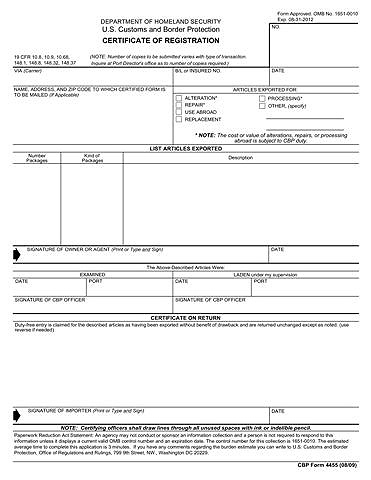 With this list in hand, go to the airport customs office and request a “Carnet” form. Carnets are like passports for equipment. Fill it out and a customs officer will sign and validate it for you so you don’t have problems or issues when you return to the U.S. (They require a day or two to be processed and require a security deposit of 40 percent of the equipment’s value. You will receive a refund of your deposit when you return home to cancel your Carnet and no claim has been filed.) Otherwise, customs has no way of knowing if you purchased this equipment abroad and they’ll probably try to make you pay taxes on the equipment value if you can’t show proof that it was yours when you left your country of origin.
With this list in hand, go to the airport customs office and request a “Carnet” form. Carnets are like passports for equipment. Fill it out and a customs officer will sign and validate it for you so you don’t have problems or issues when you return to the U.S. (They require a day or two to be processed and require a security deposit of 40 percent of the equipment’s value. You will receive a refund of your deposit when you return home to cancel your Carnet and no claim has been filed.) Otherwise, customs has no way of knowing if you purchased this equipment abroad and they’ll probably try to make you pay taxes on the equipment value if you can’t show proof that it was yours when you left your country of origin.
The same applies when you arrive at your foreign destination. The customs people there may want you to pay tax on your goods or leave a cash deposit as a guarantee that you will return with the same equipment as you brought in. They also mean business and have ways of making you pay unless you can present a valid Carnet form and show that you are prepared to return to your point of origin with the same equipment.
In some countries, custom officials are slightly corrupt and if they feel you don’t know what you’re talking about, it’s going to cost you. I’m not saying this to frighten you, but that’s just the way things work. Preparing for the entire trip is part of the production for your photoshoot. Don’t leave anything to chance!
Every time I leave on these trips, I have a tendency to overpack in case we might need this or that (or perhaps none of it). My assistants always question my sanity in these instances and I always tell them “my paranoia runs deep!” (joke). It’s good to be prepared and have multiple lenses and cameras in case a stray rhino or water buffalo gets a bit randy and wants to take your equipment out for a date. In the end, I never use half of the stuff I bring, but it’s always better to have than to be without. (They’ve got a name for people like me… “camera hoarder!”)
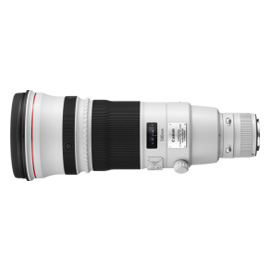 As you can imagine, there are no camera rental places in Africa you can just call up and ask for a 2x extender for your 500mm lens, which is now suddenly too short after you’ve taken a quick measurement of the distance between yourself and a lion eyeing you as though he’s auditioning for the Nature Channel. A lion can easily travel 30 feet per second, and maybe even faster when they’re hungry – your long lens starts to feel more like a wide-angle at this point. Anyway, I did pack the extender just in case as well as a bunch of other lenses of just about every focal length including a 100mm macro lens (you never know when you want to look someone – or something – in the eye!).
As you can imagine, there are no camera rental places in Africa you can just call up and ask for a 2x extender for your 500mm lens, which is now suddenly too short after you’ve taken a quick measurement of the distance between yourself and a lion eyeing you as though he’s auditioning for the Nature Channel. A lion can easily travel 30 feet per second, and maybe even faster when they’re hungry – your long lens starts to feel more like a wide-angle at this point. Anyway, I did pack the extender just in case as well as a bunch of other lenses of just about every focal length including a 100mm macro lens (you never know when you want to look someone – or something – in the eye!).
I still recommend that everyone pack lightly and wisely. Make two lists; have your priority list of equipment you truly need, then a secondary list of the things you’d like to have on your trip, but don’t truly need. Make sure you have back-ups for the important pieces of equipment. (Don’t forget extra batteries!) I always take my cameras and lenses as carry-on instead of checking them as baggage. I have enough experience and a working knowledge of traveling to know that baggage handlers are not your friends. This isn’t to say that they’re not a great bunch of guys, but your bags are completely at their mercy and susceptible to any and every whim imaginable. When it’s crunch time and things are going super fast, and they’re trying to get things done (especially when they’ve probably got an overbearing tyrant of a baggage boss breathing down their back), there’s a good chance your bags will be flying way before they even reach the plane!
Insurance is a great thing to have, but it won’t do you much good when you’re in Africa and need a replacement piece of equipment NOW. It rips your heart out when you get to your destination and find an overly aggressive bag handler has busted something important. I’ve had more than a few broken hearts caused by heavy-handed baggage monkeys than by ex-girlfriends. Be sure to pack two or more, just to be on the safe side. (Too bad this doesn’t apply to girlfriends. Having two or more of them at one time always ends badly and sometimes more than just hearts will break…)
Traveling light (literally)
When packing lighting equipment like strobes, use extra caution and use every possible shock-absorbing material you can find to wrap them up. If you can remove the bulbs, wrap them up separately. If something’s going to break, you can bet that your strobes will be the first to go.
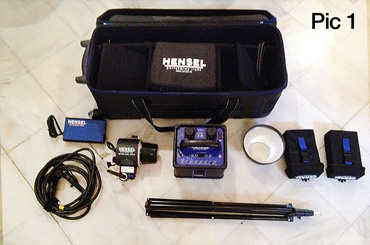 In all my years of traveling and photographing in faraway places, I’ve seen every kind of packing method and lighting equipment imaginable. My personal favorite is Hensel’s “Porty” light kits (and I’m not just saying that because they’re sponsors). They have got to be one of the best and sturdiest lighting kits I have ever traveled with because they can take everything you throw at them and ask for seconds! (see pic. 1)
In all my years of traveling and photographing in faraway places, I’ve seen every kind of packing method and lighting equipment imaginable. My personal favorite is Hensel’s “Porty” light kits (and I’m not just saying that because they’re sponsors). They have got to be one of the best and sturdiest lighting kits I have ever traveled with because they can take everything you throw at them and ask for seconds! (see pic. 1)
The Porty series of lighting kits are really compact and offer plenty of power, not to mention value for your money. It comes with a strobehead and reflector dish, an A-stand with a max height of 8 ft. and a 1,200w/s power pack that offers about 250 flash bursts on a single charge.
These should be enough to scare the life out of the errant water buffalo or get a hyena’s attention (still not sure if it’ll scare off rhinos, but I don’t think I’m up for putting this theory to the test amy time soon…). Anyway, the best thing about the Porty is that it’s super light (about 13 lbs) – it weighs next to nothing so you can grab it and run if you’ve got a cheetah looking at you like you’re the special on today’s menu.
 This is what’s in Africa with us (see pic. 2). Six sets of luggage all together (minimal stuff); two of them are wardrobe, another has shoes and accessories, the Hensel Porty, one camera bag and backpack filled with four different cameras and lenses, all of which went on with me as carry-on. And let’s not forget the Sunbounce reflector I’ll be using to bounce natural sunlight on our model to enhance exposure and skintones. I like the pure white bounce side of the reflector instead of the golden side, which works great depending on the scene. Another thing I like about Sunbounce reflectors (and again, not because they’re sponsors) is that it all fits in a very small bag and when set up, it has two handles on the back that you can grab and hold it steady when the wind picks up. The Namibian desert can be quite a windy place and you need a solid frame reflector with good, solid handles. We’ve also got some additional equipment arriving from Europe, plus we’re expecting an extra model for a variety of looks and poses.
This is what’s in Africa with us (see pic. 2). Six sets of luggage all together (minimal stuff); two of them are wardrobe, another has shoes and accessories, the Hensel Porty, one camera bag and backpack filled with four different cameras and lenses, all of which went on with me as carry-on. And let’s not forget the Sunbounce reflector I’ll be using to bounce natural sunlight on our model to enhance exposure and skintones. I like the pure white bounce side of the reflector instead of the golden side, which works great depending on the scene. Another thing I like about Sunbounce reflectors (and again, not because they’re sponsors) is that it all fits in a very small bag and when set up, it has two handles on the back that you can grab and hold it steady when the wind picks up. The Namibian desert can be quite a windy place and you need a solid frame reflector with good, solid handles. We’ve also got some additional equipment arriving from Europe, plus we’re expecting an extra model for a variety of looks and poses.
Being out here in the rugged African wilderness, these are the type of things that you start thinking about realizing things that you normally would not have given a second thought back home. Something good always comes out of every situation, even if it’s not so pleasant. I find it interesting how dependent we (well, some of us…) are on things like having the Internet in our lives and when you’ve been cut off, it’s like you have to start using those brain cells that were active and productive before the ever-accessible world of all things online came into being.
Next update will be as soon as I find somewhere to plug in my laptop…
Earlier Africa posts:





